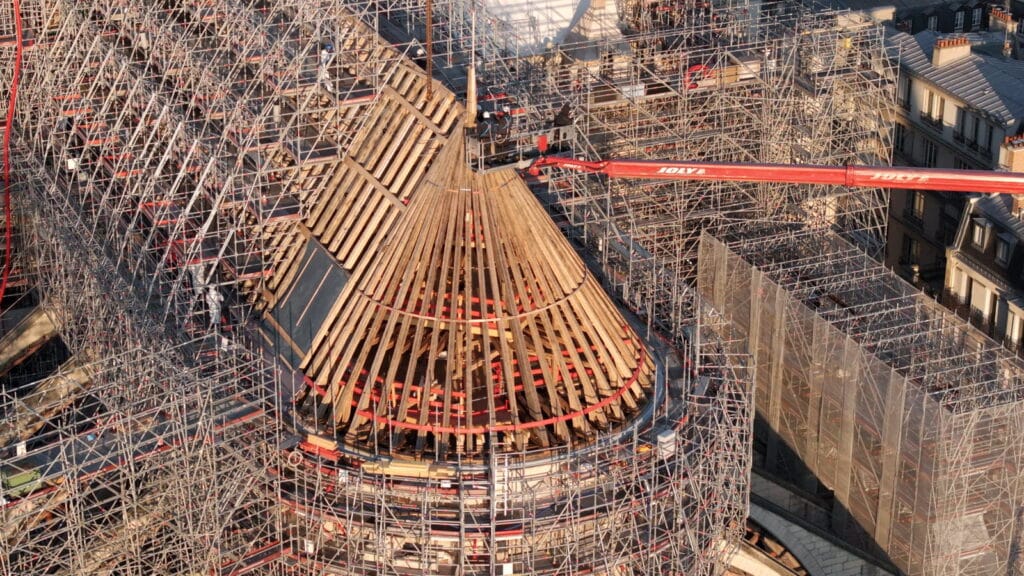Opened tomorrow from 08:00
Opened tomorrow from 08:00
After the devastating fire at the Notre-Dame Cathedral in Paris on April 15, 2019, a major restoration effort has been launched to restore this iconic monument to its former glory. An important part of this restoration is the reconstruction of the centuries-old wooden framework of the cathedral’s roof. In our world of (oak) wood, this is an interesting renovation project that we are following closely, and therefore we are excited to share more about it.



After the fire, oak wood from French soil, specifically from French production forests, was quickly chosen. These oak trees must meet several criteria: they must have a straight trunk, a certain diameter, and be of high quality. This is essential for the complex wooden structures needed for the reconstruction of Notre-Dame. Because an initial large quantity of high-quality oak with exceptional dimensions was required, it was decided to designate existing centuries-old French oak trees for felling. Shortly after the fire, various forest owners, both private and public, came forward to donate oak trees. Approximately half of the oaks used to restore Notre-Dame were donated by state forests. The other half came from private forests..

The oak trees intended for the reconstruction of the spire were selected and felled between January and March 2021, and delivered to the carpenters in the spring of 2022. We chose to fell the trees in winter because the sap flows in the oak are in their dormant state, which enhances the wood quality. Ideally, a few days of frost firm up the forest floor, preventing damage from the machinery required to extract the entire tree from the forest.
Watch the video in a French oak forest where several trees have been selected for Notre-Dame

The map shows where the oak trees for Notre-Dame originate from. The trees come from nearly all of France, but the majority are from central France below Paris, northwest of Reims, and above Poitiers. The growth conditions for oak trees in these areas are highly favorable, with an optimal amount of rain, suitable altitude, and excellent soil quality.

As a timber dealership, we transport centuries-old trees from the forest to a specialized sawmill capable of cutting such large logs. The sawn wood is then stored outdoors in the wind for about 12 to 18 months, ensuring it naturally air-dries under optimal conditions.
The 1000 required oak trees represent only 0.1% of the annual harvest of French oak for use in construction or furniture. The average annual harvest of French oak of this quality is 2 million cubic meters per year. Initially, this might seem like a vast quantity, but it’s important to put this into perspective. France is the largest country by area in Europe, with extensive oak forests.
